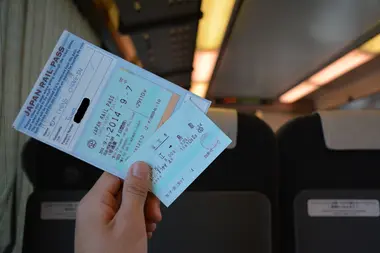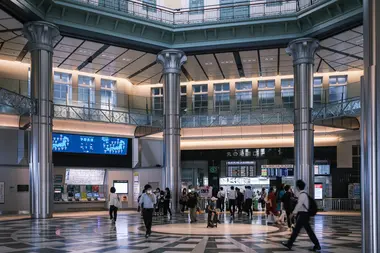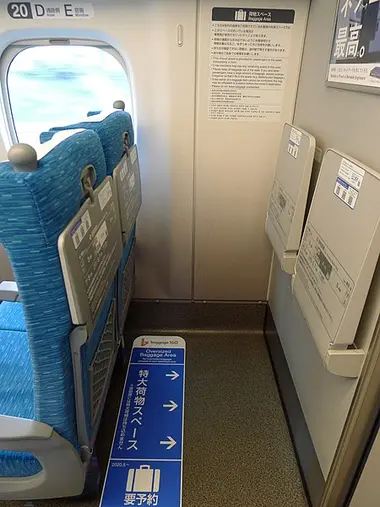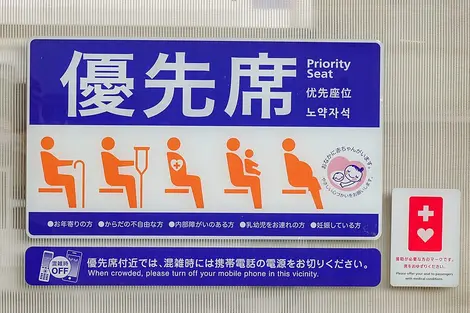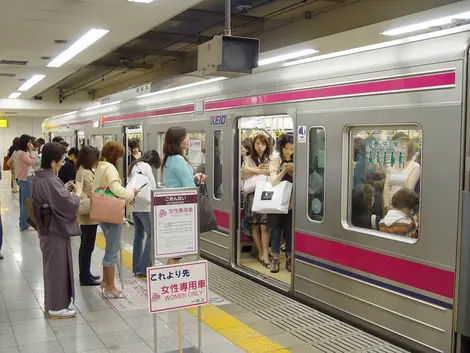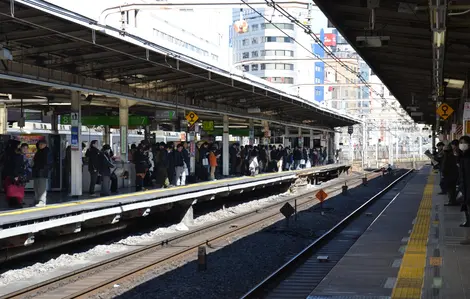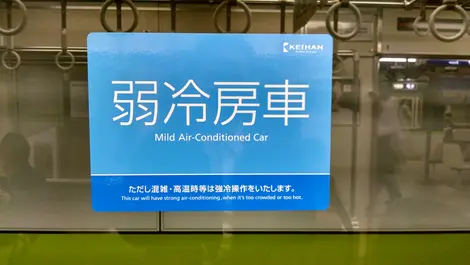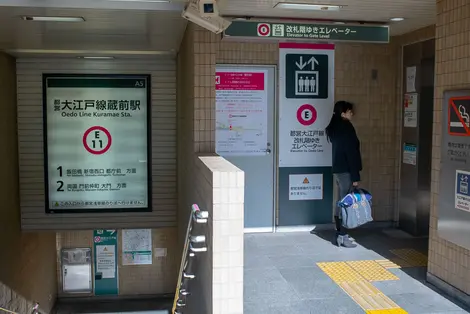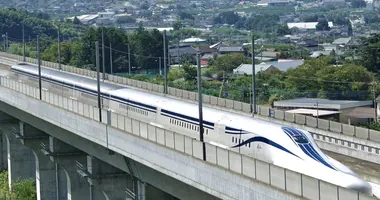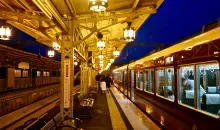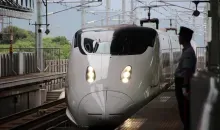How to Use the JR Pass: 7 Essential Tips for First-Time Travelers
Japan’s rail system is largely developed and is a very practical means of transportation. The Japan Rail Pass (JR Pass for short) is a useful and convenient means of getting around the country! Take a look at some of advice for using it to its full potential!
While the prominence of train travel in Japan makes its usage very commonplace, there are a few things that may require some prior knowledge or preparation before first-time visitors climb aboard. This applies even if they are coming from a country that already has a prevalent train travel culture.
Take a look at a few tips, tricks, and general quality of life suggestions to optimize your usage of the train system in Japan and get you everywhere you need to go with ease during your visit! When traveling around Japan, the following things are essential to getting the most out of your journey!
How to Use the JR Pass: 7 Tips & Tricks
- Understanding the benefits of a Japan Rail Pass.
- Understanding how to use the train system.
- Understanding how to navigate the stations.
- Using the right phone apps.
- Using the right resources in Japan.
- Practicing proper train etiquette.
- Optimizing your comfort when traveling.
Tip 1: Understand how the Japan Rail Pass works
Those preparing for their first venture out to Japan will likely have come across the Japan Rail Pass in their pre-travel research. In essence, the Japan Rail Pass is a specialized commuter ticket that allows unlimited travel via Japan Railway (JR) public transport & train lines all throughout Japan’s mainland at one fixed cost.
It is available in intervals of 7 days, 14 days, or 21 days, making it ideal for those with extended trips in the country and who wish to see as much as they can for their first trip out.
In Japan, travelers can purchase individual tickets for both local train lines and Shinkansen bullet trains at a station with the ticket machines or at train line offices. While this accessibility and ability to purchase tickets on an as-needed basis is nice, it can also be tedious to undergo this process for every ride. Additionally, keeping track of these individual tickets for each excursion will also be troublesome. With the JR Pass, travelers can forego this process entirely, as the majority of their travel needs will be included in one single ticket.
Upon ordering a Japan Rail Pass, customers will receive a voucher in the mail. Upon arriving in Japan, travelers can simply exchange this voucher for the usable pass and choose an activation date. You can exchange your pass at a number of JR offices found at JR train stations and even airports when within Japan.
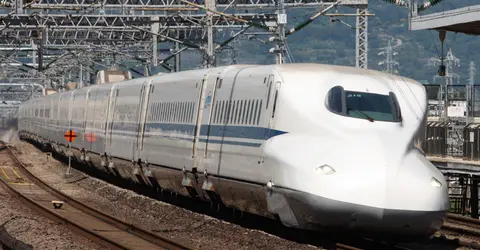
@Wikimedia
A vast network of public transit, as well as all Shinkansen trains, are operated by JR, and thus, all these options are accessible with the pass. No need to waste time going to the ticket machine every ride, finding the correct rate to pay for your destination, and paying for each individual train ticket. This process is especially a hassle when carrying around luggage and with routes that involve transfers. JR Pass holders are also able to make reservations on Shinkansen bullet trains and limited express trains free of extra charge, including for space for oversized luggage! This option can prove to be invaluable when traveling around the country. Reservations can be done easily at JR offices or ticket machines at stations throughout Japan!
For first-time travelers to Japan, being able to skip out on the intricacies of train navigation is strongly beneficial for hitting everything on your itinerary, as the pass is ideal for seeing as much of Japan as possible. With full Shinkansen train access, all 46 prefectures of the Japanese mainland (Okinawa’s transit system is not operated by JR) can be quickly and conveniently traveled to. Pass holders are even able to reserve seats on the Shinkansen if so desired and at no extra cost (reserved seats incur an additional cost when buying tickets individually). However, one of the great features of the pass is its flexibility, in that, for many Shinkansen bullet trains, a reservation is not required, so pass holders can simply board one of the free-seat cars (usually cars 1-4) on the train as they please without booking in advance.
With the Japan Rail Pass, travelers can theoretically commute all the way from the most northern island of Hokkaido to the most southern main island of Kyushu and everywhere in between. First-time visitor itineraries will often be filled with a number of destinations and activities, with a number of day trips scattered throughout.
Be aware that a lost JR Pass cannot be replaced; however, it is important to notify station staff or JR if yours goes missing in case one is found by station stuff or is turned in!
The Japan Rail Pass is perfect for this form of travel, along with being very flexible and convenient, so it’s an option that shouldn’t be overlooked!
If the Japan Rail Pass doesn't seem to fit your itinerary, however, there are dozens of regional pass options that operate like the Japan Rail Pass but cover more concentrated areas at a more affordable price! Depending on your trip, these may also be great to look into!
Tip 2: Understand how the train system works
Riding trains on their own is something that likely does not need extensive research by anyone. However, the details on Japan’s train system may be quite distinct compared to many Western countries.
One major thing to note is that, in Japan, train fare is typically calculated by distance, and this goes for both local and Shinkansen bullet trains. The more stops you pass, the more expensive the fare becomes, and this rate is different from train line to train line. This may differ from train systems in other countries that simply charge riders one flat rate. For Japan Rail Pass holders, this isn't a factor when traveling on JR-operated transportation, such as the Shinkansen bullet train, the JR Yamanote Line, and the JR Osaka Loop Line.
Tickets for the train can be purchased at the touch-screen machines that are often by train line gates. They are often separated for local train lines and then ones specifically for Shinkansen bullet trains.
Be sure to hold on to any tickets received at these machines, as they’ll be needed to exit the destination station. For users of the Japan Rail Pass or other regional passes, individual tickets do not need to be purchased if the line is covered by the pass and can be entered and exited freely with that same ticket.
At these same machines, one can purchase or charge an IC Card such as the Suica or Pasmo (both of which are currently not being sold due to IC chip supply issues), ICOCA (commonly used in Kansai), or a number of other cards depending on the region. These can be used to ride the local trains more smoothly as well, as they are charged when entering and exiting. Do keep in mind that you may need to continuously load money onto these cards to use them consistently. Note that there are some local lines in more rural or suburban areas that need region-specific IC cards, so be sure to do research on whether any of your destinations need these cards.
Another alternative for getting around certain cities are pre-paid day passes that allow unlimited travel via certain transportation facilities. Examples of such include the Tokyo Subway Pass that can be used for the Tokyo Metro, the Osaka Day Pass that can be used for the Osaka Subway and Bus, and the Kyoto Bus Pass that can be used for the Kyoto Bus Network that goes through much of the city and its major attractions. The Japan Rail Pass incorporates inner-city travel via the JR Lines like the Yamanote Line in Tokyo or the Osaka Loop Line in Osaka.
The direction of trains is designated by their primary destination (i.e. the JR Yamanote Train bound for Shibuya/the JR Chuo Line Train for Nakano). Be wary of which trains you board as there are trains designated as “local” that stop at every/most stations on the line (各駅停車), “rapid” trains that skip some stops (快速), and “express” trains that skip even more stations so that they can stop at the primary stations much quicker (特急). If you board the wrong train, you may end up missing your stop, so be sure to pay attention to the correct platform and the departure of the train you need to ride.
Tip 3: Understand how to navigate the stations
It’s important to note that, while Japan’s train network and system is efficient and convenient, it’s not without some getting used to. In major cities especially, train stations will be major junctions of transit and commercial activities.
Tokyo Station alone has 28 different platforms servicing eight local Japan Railway lines, seven Shinkansen bullet train lines, and the Tokyo Metro. There are also departures for buses throughout Tokyo along with long-distance highway buses, multiple taxi pick-up and drop off spots, three different multi-story department stores, and a vast underground network with restaurants, shops, and other facilities. Other major stations in the country, like Shinjuku Station, also in Tokyo, Umeda Station in Osaka, and Hakata Station in Fukuoka, follow a similar format.
In short, train stations in Japan are a lot larger and more complicated compared to ones in other countries. Visitors who are not yet accustomed to navigating these stations and utilizing the facilities within them ought to prepare for such by researching their itineraries and what public transportation facilities they'll be using for such. This mitigates the chances of getting lost or confused. Also, try to pack relatively light, especially in summer. The sheer size and number of stairs throughout means you won’t want to lug around numerous and/or heavy luggage around. Anticipate the time you’ll take to reach platforms and make connections by giving yourself an extra couple of minutes to your public transportation itinerary.
By no means should you need to research maps of individual stations to know the in-and-outer workings of their layout, but get a general idea of the size of the major stations you’ll be visiting.
Signs are written in a number of different languages, including English, Korean, and Chinese. Utilize these signs to go between different lines, and in case you do get lost, don’t hesitate to ask station staff who have at least conversation-level English to communicate with travelers.
Tip 4: Use phone apps to your advantage
Regarding navigating around Japan using the public transportation network, utilizing the right tools for getting you from A to B is another essential thing to prepare. The modern age has given travelers access to tools that have done a great job of alleviating some of the stress that often comes with visiting a foreign country.
Undoubtedly to become one of your greatest assets as you travel throughout Japan is a navigation app of your choosing. For much of the world, the most popular in this category is Google Maps. As the industry standard, Google Maps’s timetables and accuracy is meticulously tended to, and the specificity the application can guide users is very useful, presenting travelers with details on routes that include multiple forms of transit (be it walking, train, bus, and even ferry), pricing, and even details on which exits to leave through at specific stations in order to get to your final destination.
Other options for navigation are Japan-specific applications such as Jorudan, Navitime, and Japan Travel. These apps also often include routes that can be filtered to be fully or mostly accessed with special rail passes, like the aforementioned Japan Rail Pass, making them especially useful for these pass holders and first-time travelers.
Another application to utilize for those who do not speak or read Japanese, is a translation tool of some type. Again, Google makes its presence known here with the Google Translate application, but take a look at some other options such as Yomiwa. This application is dedicated specifically for Japanese translation and learning that will be useful for those studying the Japanese language and those with no familiarity with the language at all.
Another type of application to utilize is that of charging device rental apps. These have grown in heavy popularity in the last few years in Japan and are very handy for travelers who'll be out and about all day. The most prominent of these options is ChargeSPOT, whose rental machines can be found in convenience stores, by train line gates, at restaurants, and even at karaoke spots! While the Shinkansen bullet trains have usable outlets for travelers to use to charge their devices, local trains (mostly) do not, and free-to-use outlets are more rare in Japan than people may initially think. It’s best to have adequate battery in your phone to properly navigate around and stay connected.
Tip 5: Use the right resources
While where you go, how you get there, and what you do in Japan is up to your own discretion, don't forget: you're not alone in your travels!
In other words, you have the archives of the countless questions asked about Japan train travel on the internet, an array of different articles and support options on our website to answer your questions, and, of course, the knowledge of Japan Railway's own employees at your disposal.
Have a question on specific routes or ticket usage? Chances are someone else in the past asked the same or a similar question and had it answered on an online forum. Additionally, utilize the expertise of Japan travel experts like Japan Experience who have articles and resources on a medley of different questions, such as train reservations, luggage policies, and general travel advice. Here are some articles to read up on to help prepare you for your journey:
- Read more on making reservations for trains here.
- Read more on the oversized luggage policy for the Shinkansen here.
- Read our Japan travel guide here.
Specifically for Japan Rail Pass users, we offer a support service called JRP Care that gives you access to our dedicated Japan Rail Pass hotline that can be called for any inquiries regarding the pass. This includes questions on where and when to exchange, what trains to use, and other general train inquiries. You can even call for our own personal advice on where to go and how to get there, making it a great service for first-time visitors.
Tip 6: Understand train etiquette
As public facilities, it goes without saying that practicing common courtesy on trains, buses, and other modes of transportation in Japan is something to be mindful of. But what may or may not be proper train etiquette in one’s home country, doesn’t necessarily apply to all aspects of train etiquette in Japan.
In general, here are some things to keep note of while riding the train in Japan:
- Keep noise to a minimum: While making excessive noise in any public setting is looked down upon in any country, trains in Japan are typically more quiet compared to other places. That’s not to say that conversations are fully restricted, but it may be best to avoid unnecessary conversations and to keep your voice down if you do need to discuss anything, such as what station to get off or other pressing matters. Be sure to avoid using the phone as much as possible. In fact, oftentimes, if a Japanese person receives a phone call from a superior at work, they'll acknowledge that they are on the train and use such as a reason to call back.
- Be mindful of priority seats: At the end of each car on public trains are priority seats (優先席). These seats are intended to be used by commuters who may have difficulties standing or would benefit from being able to sit. This includes pregnant passengers, the elderly, those with physical disabilities, or mothers and young children. Though there is no hard-set rule on who and when these seats are to be used, it’s seen as a courteous practice to leave the seats open if not needed. What also may be seen often is that, if these seats are occupied by someone who may not immediately need it, the seat is often given up in case a passenger who does need it boards.
- Avoid eating and drinking inside the train: The delicious street food goodies and array of snacks available at the convenience store means that eating on-the-go is a constant temptation, especially during busy travels. However, eating while walking, in public spaces (except for a fun summer festival), and while riding the train is generally taboo in Japan. However, there are some exceptions to this rule depending on the way you go about it and what you’re eating. Quickly eating a few pieces of a snack or candy on the train will be generally fine, but anything that requires utensils, may make a mess, or has a strong smell, may be best to avoid. However, these customs change when on trains meant for longer journeys, such as the Shinkansen bullet trains, where enjoying a nice meal is more than acceptable, and often encouraged, in the form of luxury ekiben meals.
- Properly queue to board the train: On the platforms, there are often markers to display where riders can line up to board the trains. Depending on the line, they’ll be colored and marked to distinguish between lines for local, rapid, or express trains, as sometimes the boarding location is different. It’s common practice in Japan to line up one-by-one or by group before boarding the train and to enter the train based on the order of the line. Be sure to wait until everyone getting off the train at the stop have fully walked off before entering.
- Be mindful of the last train: stationsTrains in Japan do not operate 24/7, even in large cities. If you need to take the train home, be sure to be mindful of the final departure for the day, or you will need to wait for the first train in the early morning or find another way home. However, the final train usually departs rather late, depending on the departing and arrival station.
Tip 7: Optimize your comfort
This tip covers an array of different things to prepare for, but in general, it's important to note that, when going throughout Japan and taking the train, you'll be moving around a lot. As previously mentioned, train stations in Japan are relatively large, formatted with a number of stairs and lines to move between. You'll be constantly on the move, so to prepare for this, try to pack as lightly as possible to reduce the amount of stuff to carry around. This will additionally be ideal for saving valuable space on the train, which is especially important to be mindful of during rush hour when trains get really crowded. Travelers who may be bringing special equipment such as winter sports gear or musical instruments should be wary of this and maybe look into shipping their belongings.
Aside from things to carry around with you, first-time travelers should dress appropriately for the weather. While the seasons of Spring and Fall in Japan are very comfortable and great for travelling, Summer and Winter are times to be cautious of.
Summer in Japan is notoriously hot and humid, so be sure to dress comfortably to stay cool. The insides of stations often don't have air conditioning, so carrying around excess luggage while climbing stairs can be troublesome in the summer heat. In that regard, look to take the elevator inside stations when you can. Also note, that sometimes there are train cars that have milder air conditioning in order to save on electricity. These cars will be marked with a "Mildly Air-Conditioned Car" sign (弱冷車). If you are heat sensitive, it may be best to avoid these train cars.
Winter in Japan can see a lot of snow depending on the location, so be careful of such and wear the right footwear. Excess snow or rain in some locations can lead to train delays so be prepared for such, as you may have to contact your place of accommodation if you are delayed for whatever reason.
In Conclusion: Be prepared, but remember to enjoy!
With all this information and the preparations for going to a foreign country, it’s easy to be a bit overwhelmed. However, it’s important to remember that Japan’s trains are used by literally millions of people every day with very little to no issue, and while there may be a need for some preparation and things to keep in mind to navigate around smoothly, it’s something you’ll overcome soon enough. You will be ready to experience all the wonderful things and places Japan has to offer. When worse comes to worst, always remember you have the internet and station staff to consult with, but soon enough, you too will become an expert on the Japanese train system and make this first trip to Japan a trip of a lifetime.

